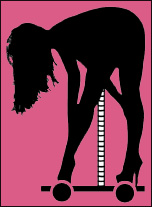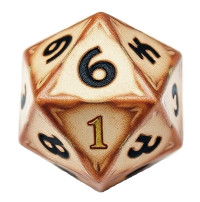The ability to box is typically founded on basic balance and mobility skills learned over many hours of tedious gym work, doing line drills and shadow boxing for weeks before even hitting the bag. Boxing foot work is intended for smooth surfaces: asphalt, concrete, tile and wood. It can be hazardous on carpet to the knee and unstable on grass.
With time running short I had the need to help Portland Joe develop some limited proficiency with his hands and fists. He has done extensive empty hand checking drills defending against the clinch, the punch and the knife. So I started here, without preparatory step-and-drag footwork drills. We had already used up two hours in weapon training. But if Joe has no weapon and he gets corned, he needs to be able to stun or hurt an attacker. He does have a punching bag at home, so all of our work would be dedicated to the bag, so he could make the most of that over the next two months before my return.
We are not learning to box here, but cannibalizing a section of the boxing skill set in order to survive and counter an empty hand attack when we are unarmed. [1]
Each drill begins with the hands up in an open asking posture and the left foot having just been shifted back. The posture challenge is to make sure that the rear heel would be able to slide forward on a line that passes under the target, without looping around the lead toe and without hitting the lead toe. Each drill supposes that a larger and/or stronger man is coming forward.
Drill One: 1-2-1 Fade
-a. As you slap the bag with an open lead right hand jab at that point where his eyes or forehead would be, slide the lead right foot forward by about the depth of your toes and the ball of your foot, while shifting your weight from your rear foot to your lead.
-b. While pulling back the lead right hand halfway to your guard, slap the line of the chest and chin with a straight left while push-pivoting with the rear foot.
-c. The fade is stepping 45 degrees diagonally to the left and back with the left foot while dragging the lead foot back and sending a light slap to the eyes.
For self defense, the slaps to the eyes could be finger spears, jabs or rakes and the slap to the chin and chest might be a punch. Learning with the slap is a way to loosen the arms and shoulders to enhance delivery speed and power.
Additionally, any time the skull is presented by a charging foe you may slap as hard as you can with minimal danger to your hand [so long as your thumb is cohesive with your fingers and your fingers are together] and inflict the same amount of trauma to his neck and brain as if you would have crushed your fist on his crown.
...
The following drill is for developing punching and in case you are cornered and cannot move.
Drill Two: Stationary 1-2-1
The hands are held curled in an un-clenched fist. As the punch is thrown, thrusting out from the body at the elbows with minimal tension in the shoulders, the fist should be closed and clenched on impact by sliding the thumb down the first finger from the middle joint, to lock under the front joint of fingers 1 and 2.
The fist should rotate half way so that the thumb and first knuckle are uppermost but not perpendicular to the flow, but on a diagonal angle. This is the ¾ fist. You are aiming to hit with the middle knuckle first and driving the knuckle of the ring finger behind it from the elbow, a modification [2] of Dempsey’s power-line ring-finger method.
-a. Step in behind the lead right jab punch as in the slap fade drill above, with a 1/3 foot slide making sure the weight shift is transfered, targeting nose-eyes, as you land your fist, driving upward slightly. [3]
-b. Punch the chin or chest with the rear left hand as you pull back the jabbing right hand halfway and drive off the rear left foot by lifting the heel and dropping the knee. The weight is now mostly on the lead right foot.
-c. Rock your weight back onto the right foot without flattening the heel and slide the lead foot back the distance it went out, throwing a jab to the eyes to cover.
Repeat this a few times experimenting with synchronizing your weight shifts with the landing of your punches
…
Drill Three: Fade and Switch 1-2-1
This drill is to be done with open hand and then fist.
-a. Jab the bag with the lead right hand [#1] as you step back and left 45 degrees with the rear left foot and drag the lead right foot across the same distance you stepped. This is a week punch, which in self-defense should be an eye spear, jab or rake or a shoulder check. The rear left hand must be kept high to defend against his right hand, making this more suited for grabbing attempts, particularly left grab to right punch attacks. This is the avoidance step.
-b. The rear left hand is a hard punch that is thrown while pushing off with the rear foot, stepping out 45 degrees across his line of advance with the lead right foot, hitting him with the left hand with that energy transfer and then dragging that rear foot you pushed with. This is a powerful, clutch transition which is the meat of the combination. This is the counter stroke. Ideally you step across and strike into him as he moves forward, putting his weight and yours into the stroke.
-c. Step again, past him with the lead right foot, as far as you can do it on balance as you jab to his eyes with your right and drag your left foot around behind you as you pivot on the lead right foot. This is your escape or exploitation step. If successful you can light him up from a standing combination while he turns, or you can keep wheeling behind him as you jab with the right and check with the left in case he shoots for a leg or your hips.
The first step moves your lead right foot to the outside of his rear right foot.
The second step moves your lead right foot between his feet.
The third foot moves your lead right foot to the left side of his lead left foot.
This southpaw orientation is necessary in case there is a knife in his fight hand [were over 95% of knives are]. It is also preferable in most high-leverage unarmed attacks that feature a following rear right foot, and work excellently against poor leverage squared up attacks.
…
Drill 4: Step Around the Clown
This is a rush variation of 3-c above.
If this idiot just wings off with a rear right hand, step right around his left, as you raise your rear left to guard and jab him with your lead right as you pivot on the foot and wheel the drag leg behind. The key is to practice this slow and preferably on concrete, wood, [4] tile or asphalt, not carpet or puzzle mats, to protect the pivoting knee of the foot that just stepped. The step is a reach around step landing on the ball or flat, but then pivoting on the ball as you drag the wheeling left leg around. [5]
Drill 4 is a knife defense drill modified as a boxing gambit. If he had a knife you would keep your left hand in a mid guard while you raked his eyes with your right finger tips in a spear hand.
…
Notes
-1. My manuals Solo Boxing and The Punishing Art each take a different approach to verbal boxing instruction in writing.
-2. To avoid the boxers fraction so commonly associated with Dempsey’s powerline method, a method of power that can cause hand breaks even with wrapped and gloved hands.
-3. To strike the eye ball and/or crack the inner orbit of the eye socket.
-4. Most boxing rings and MMA cages are wood covered by canvas or plastic. Wresting mats are much safer than puzzle mats.
-5. This pivot can be done from the heel as well, for a safer lower-leverage limited power position of advantage.











